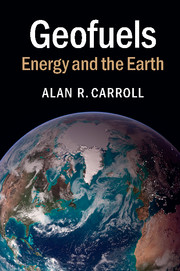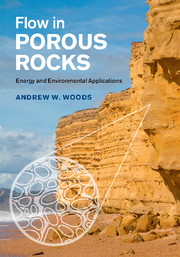Refine listing
Actions for selected content:
1211 results in Ebooks in petroleum sciences
5 - Covered in Green: Biofuels Basics
-
- Book:
- Geofuels
- Published online:
- 05 March 2015
- Print publication:
- 05 March 2015, pp 80-102
-
- Chapter
- Export citation
15 - How Long Is Forever? Energy and Time
-
- Book:
- Geofuels
- Published online:
- 05 March 2015
- Print publication:
- 05 March 2015, pp 314-341
-
- Chapter
- Export citation
9 - Skimming the Cream: Conventional Oil and Gas
-
- Book:
- Geofuels
- Published online:
- 05 March 2015
- Print publication:
- 05 March 2015, pp 165-188
-
- Chapter
- Export citation
6 - Fossil Farming: The Geologic Underpinnings of Biofuels
-
- Book:
- Geofuels
- Published online:
- 05 March 2015
- Print publication:
- 05 March 2015, pp 103-122
-
- Chapter
- Export citation
13 - Primordial Power: Geothermal and Nuclear
-
- Book:
- Geofuels
- Published online:
- 05 March 2015
- Print publication:
- 05 March 2015, pp 261-286
-
- Chapter
- Export citation

Geofuels
- Energy and the Earth
-
- Published online:
- 05 March 2015
- Print publication:
- 05 March 2015
2 - The Living Earth
-
- Book:
- Geofuels
- Published online:
- 05 March 2015
- Print publication:
- 05 March 2015, pp 13-31
-
- Chapter
- Export citation
Acknowledgments
-
- Book:
- Geofuels
- Published online:
- 05 March 2015
- Print publication:
- 05 March 2015, pp vii-viii
-
- Chapter
- Export citation
Contents
-
- Book:
- Geofuels
- Published online:
- 05 March 2015
- Print publication:
- 05 March 2015, pp v-vi
-
- Chapter
- Export citation
14 - Out of Sight, Out of Mind: Geologic Waste Disposal
-
- Book:
- Geofuels
- Published online:
- 05 March 2015
- Print publication:
- 05 March 2015, pp 287-313
-
- Chapter
- Export citation
12 - Water, Water, Everywhere
-
- Book:
- Geofuels
- Published online:
- 05 March 2015
- Print publication:
- 05 March 2015, pp 237-260
-
- Chapter
- Export citation

Flow in Porous Rocks
- Energy and Environmental Applications
-
- Published online:
- 05 January 2015
- Print publication:
- 18 December 2014
3 - Flow in porous rocks
-
- Book:
- Flow in Porous Rocks
- Published online:
- 05 January 2015
- Print publication:
- 18 December 2014, pp 28-51
-
- Chapter
- Export citation
1 - Introduction
-
- Book:
- Flow in Porous Rocks
- Published online:
- 05 January 2015
- Print publication:
- 18 December 2014, pp 1-10
-
- Chapter
- Export citation
5 - Dispersion in porous media
-
- Book:
- Flow in Porous Rocks
- Published online:
- 05 January 2015
- Print publication:
- 18 December 2014, pp 70-91
-
- Chapter
- Export citation
8 - Fluid–rock interactions
-
- Book:
- Flow in Porous Rocks
- Published online:
- 05 January 2015
- Print publication:
- 18 December 2014, pp 128-155
-
- Chapter
- Export citation
10 - Buoyancy effects on dispersion
-
- Book:
- Flow in Porous Rocks
- Published online:
- 05 January 2015
- Print publication:
- 18 December 2014, pp 196-226
-
- Chapter
- Export citation
13 - Epilogue
-
- Book:
- Flow in Porous Rocks
- Published online:
- 05 January 2015
- Print publication:
- 18 December 2014, pp 279-280
-
- Chapter
- Export citation
References
-
- Book:
- Flow in Porous Rocks
- Published online:
- 05 January 2015
- Print publication:
- 18 December 2014, pp 281-284
-
- Chapter
- Export citation
7 - Two-phase flow
-
- Book:
- Flow in Porous Rocks
- Published online:
- 05 January 2015
- Print publication:
- 18 December 2014, pp 110-127
-
- Chapter
- Export citation
